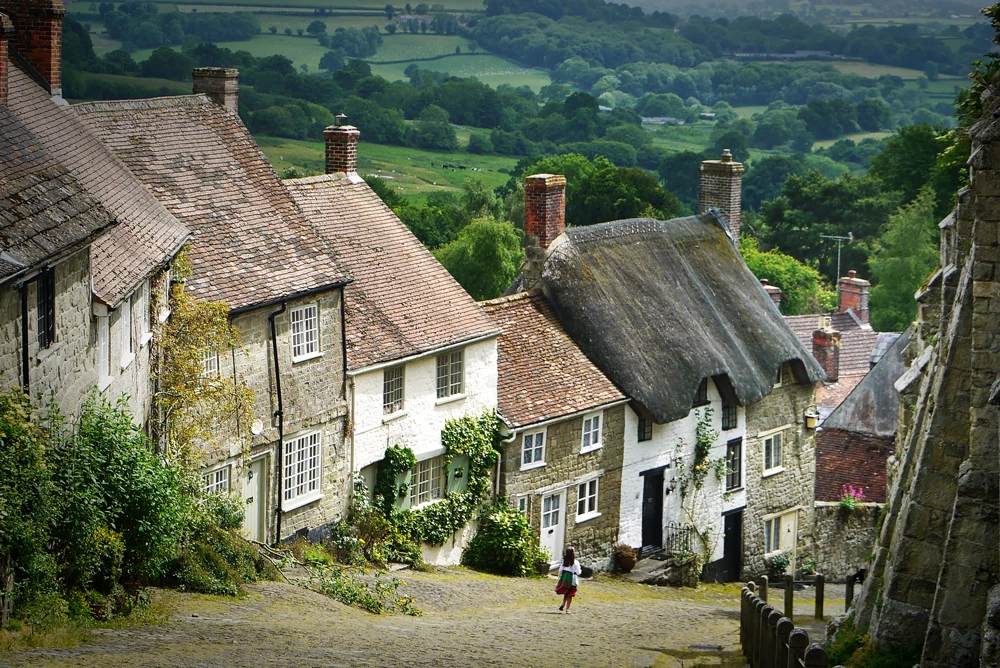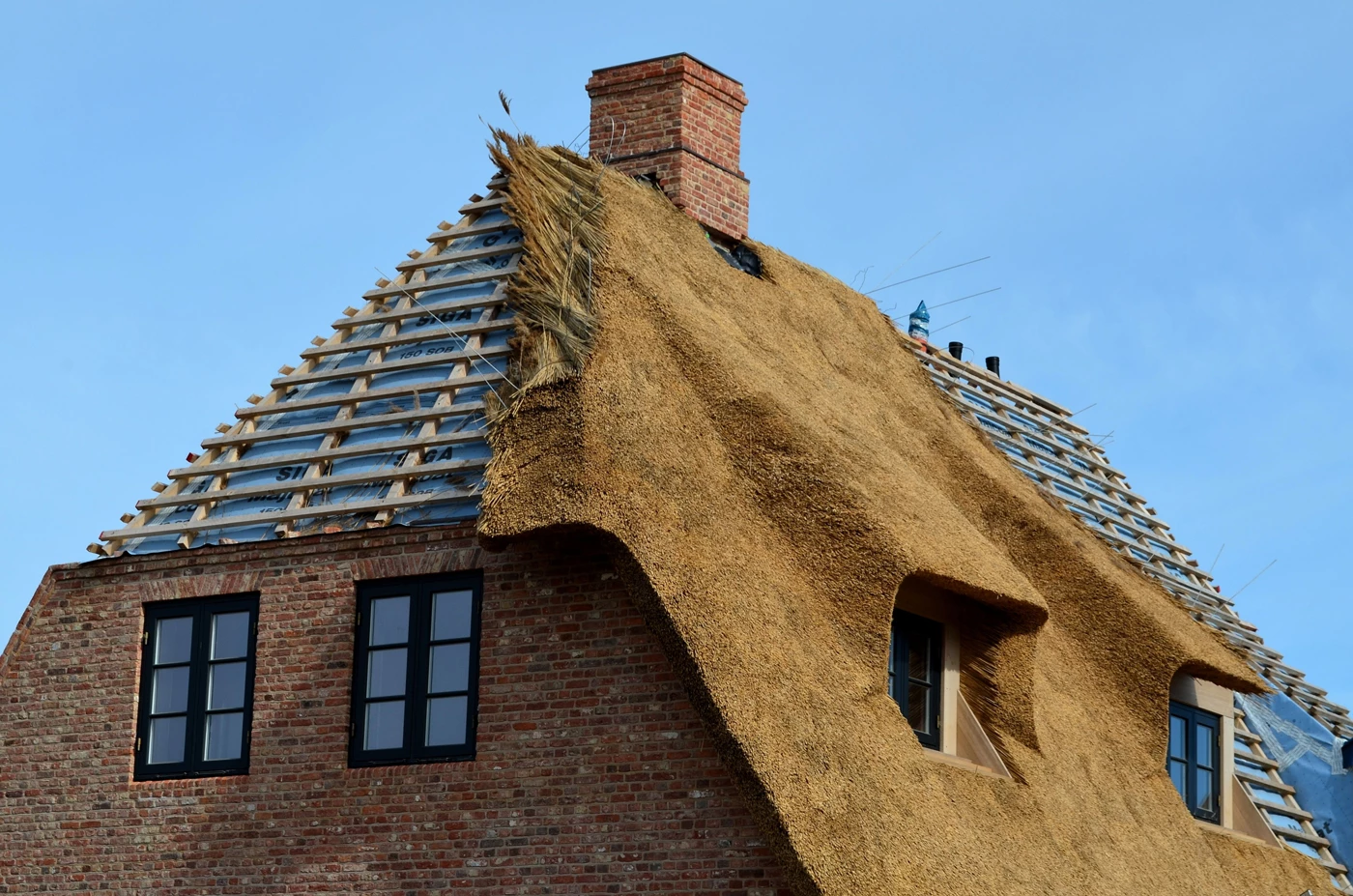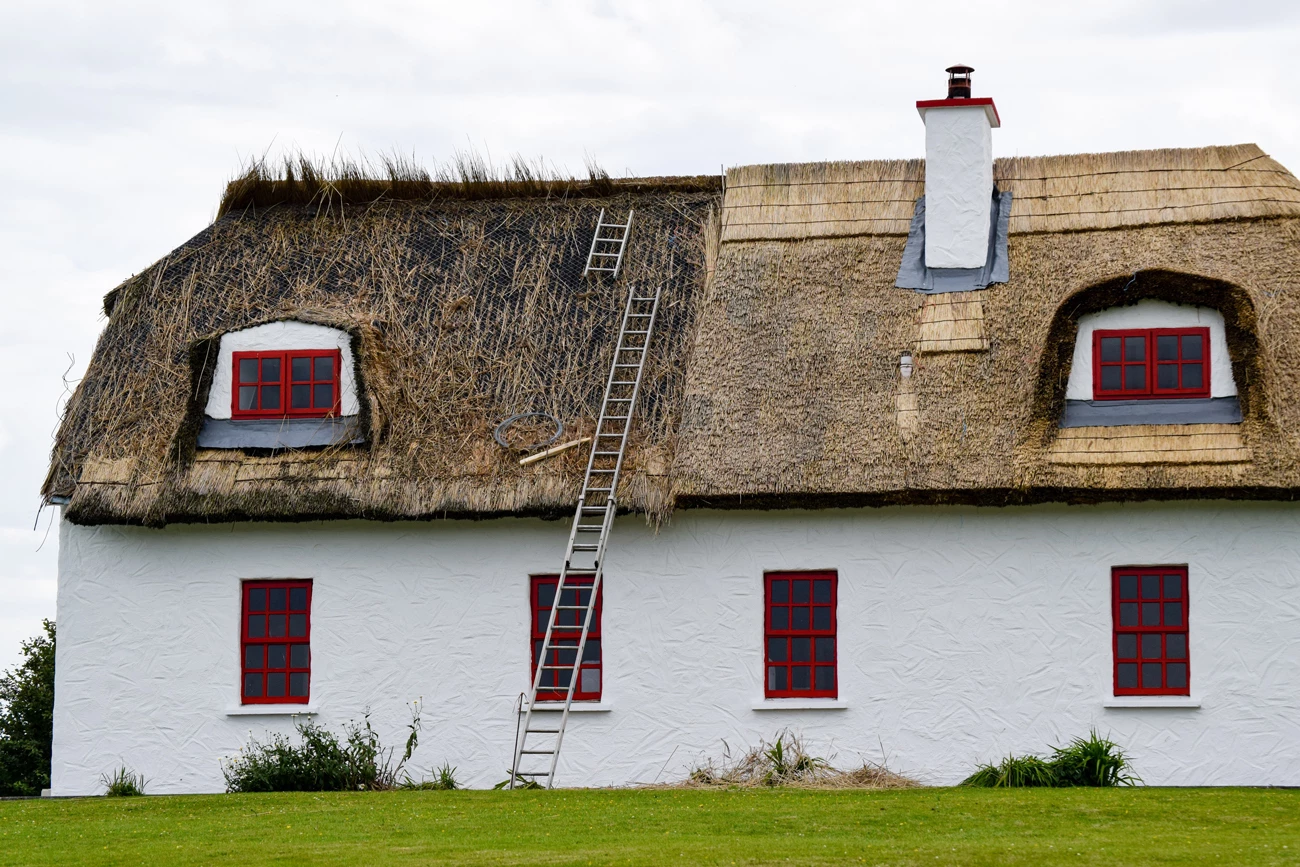15/11/2019 | Category: Home Insurance

Dating back to the Bronze Age, thatched roofs are a quintessential part of the English rural landscape. These roofs may have been around for centuries, but they haven’t always been adored.
Many people have had a real love-hate relationship with thatched roofs over the years. Thatches have been described as the Marmite of the property world, and grew increasingly unpopular during the 1980s and 1990s.
For a long time, potential buyers refused to consider a thatched property when looking for a new home. Even if a house was perfect in every other way, many would see a thatched roof as a greater fire risk, with pricey maintenance and repair bills.
However, times have moved on, and the things people previously associated with thatched-roof properties have become less of an issue.
Plus, with increased awareness of sustainability and reducing energy costs, thatched roofs are making a comeback as an eco-friendly building material. As a result, we are seeing more new-build country homes being constructed with thatched roofs.
Having the right non-standard home insurance in place can also give you peace of mind that if you do need to repair or replace a thatched roof because of damage, your costs would be covered.
When to repair a thatched roof?
When it comes to thatched roofs, one of the biggest decisions you have to make is whether a roof should be re-thatched or could be repaired.
If a roof has been leaking or shedding thatch over a period of time, and a thatcher has been unable to fix the issue, then a rethatched is probably the best option.
However, when a roof just looks a bit tired (and by ‘tired’ we mean the thatch looks a bit thin or patchy, the fixings are starting to show through, or there’s a sudden surge of moss or algae), then a repair is probably all that’s needed.
Damage caused by birds or a storm to a thatched roof is easy to repair and need not cost too much – as long as you act quickly.
How to maintain a thatched roof
Good roof maintenance will help prolong the life of your roof.
If you own a home with a thatched roof it is a good idea to clean it once a year. Removing leaves, fir needles, moss and algae means the roof becomes more durable and is able to dry out more quickly (so preventing the growth of fungi which can start decomposing the thatch).
Here are some key points to remember when carrying out maintenance work on your thatched roof.
1 Clean your roof by hand
Cleaning a thatched roof must be done by hand.
Different types of rakes can be used to remove any leaves and moss and when done professionally, does not cause any damage to the roof. Contrary to opinion, raking does not spread fungal spores in a thatched roof.
These spores are present in all thatched roofs, problems only start if those spores find the right (aka damp) conditions in which to live.
2 Keep trees and shrubs in check
The drier a roof is, the longer it will last, so any trees or bushes growing near the house need to be kept in check.
If there is too much shade, a thatched roof cannot dry as quickly in the sun and wind. And if there is too much overhang, the roof will be continually dripped on and remain dewy. These damp conditions are ideal growing conditions for fungus.
3 Control the growth of algae
A layer of algae across your thatched roof will prevent ‘natural drying’ by the sun and wind and reduce the lifespan of your roof.
Roofs can be sprayed with an algaecide to kill any algae or moss.
This method is cost effective as it can mean a roof lasts an additional ten to 15 years. It also has the added advantage of making the roof look more visually appealing.
4 Avoid unnecessary damage
Make sure that other trades do not damage your roof unnecessarily with ladders or by walking on the thatch. Any divots can speed up the wear and tear of the thatch and damage to the ridge can be particularly detrimental to the roof’s lifespan.
How often does a thatched roof need to be replaced?
When a roof has been professionally thatched, it should last between 40 and 50 years (so, the same as any other roof). However, the roof ridge will have to be replaced roughly every eight to ten years.
The fact is, some thatched roofs age better than others. This can be due to a number of reasons including:
· The skills of the original thatcher
· The quality of materials used
· The pitch of a roof (a slacker roof will wear more quickly)
· The roof’s aspect (being in shade for most of the day will encourage damp)
Keep a close eye on your roof and any changes in it – especially before and after the winter months. If your property is a listed building, you will need to consult with a conservation officer before going ahead with a rethatch.
How much does it cost to repair a thatched roof?
As with any roof, the size and complexity of the roof determines how much the repairs will cost. For example, the cost of a ridge replacement is around 25% of the cost of replacing the entire thatch.
Ridges allow thatchers to show off their creative side, and a well-designed ridge can significantly boost the appeal of a cottage, so it is worth the investment.
Another good investment is having a fire retardant applied to your roof to slow the spread of fire. Many insurance companies stipulate the application of fire retardant sprays to a new roof. Before you decide on a non-standard home insurance policy, make sure the spray you choose complies with the policy.
If you want to add netting to the roof to minimise damage by birds or other wildlife, this will incur an additional cost. However, bear in mind that as long as there are not too many creatures making your roof their home, the damage will not be significant.
A final cost to consider is scaffolding. This can be expensive and adds to the repair bill. Make sure you factor it in from the start.
Non-standard home insurance for thatched roofs
In the insurance world, houses with thatched roofs are considered ‘non-standard’.
If you are struggling to find cover for your thatched-roof home, get in touch with Insurance Choice. We have non-standard home insurance to suit a wide range of homes and keep insuring your home hassle free.
Find out more and get a quote today.
